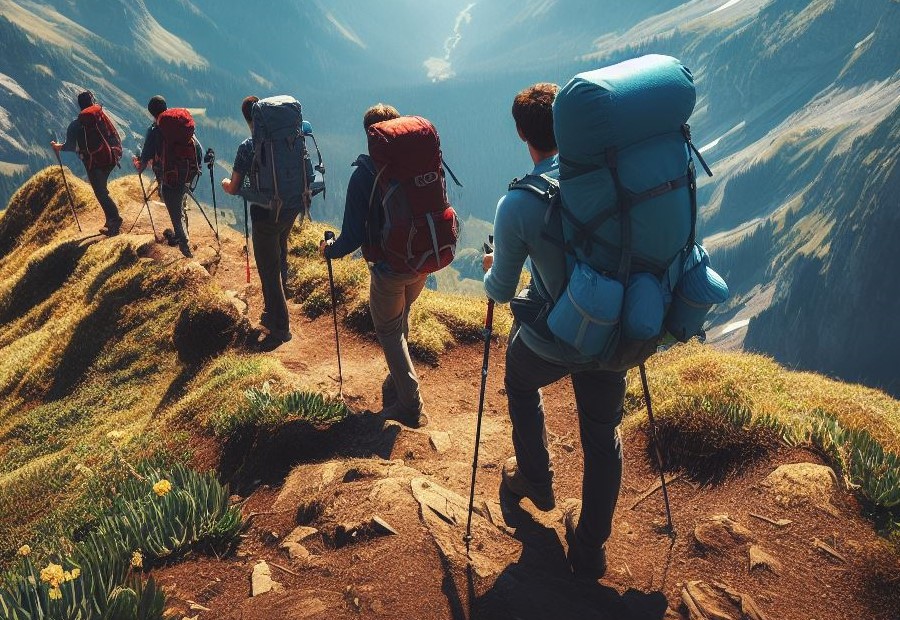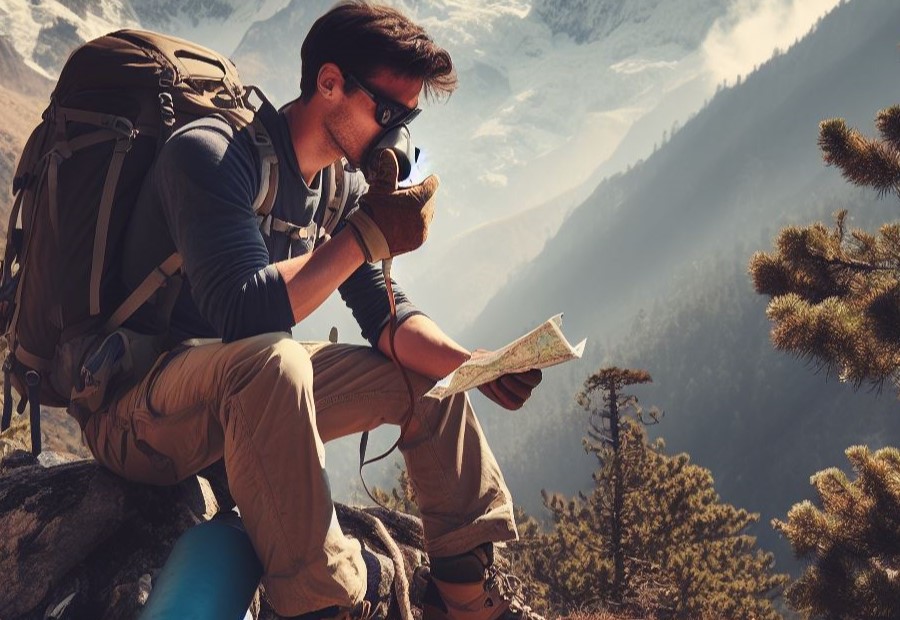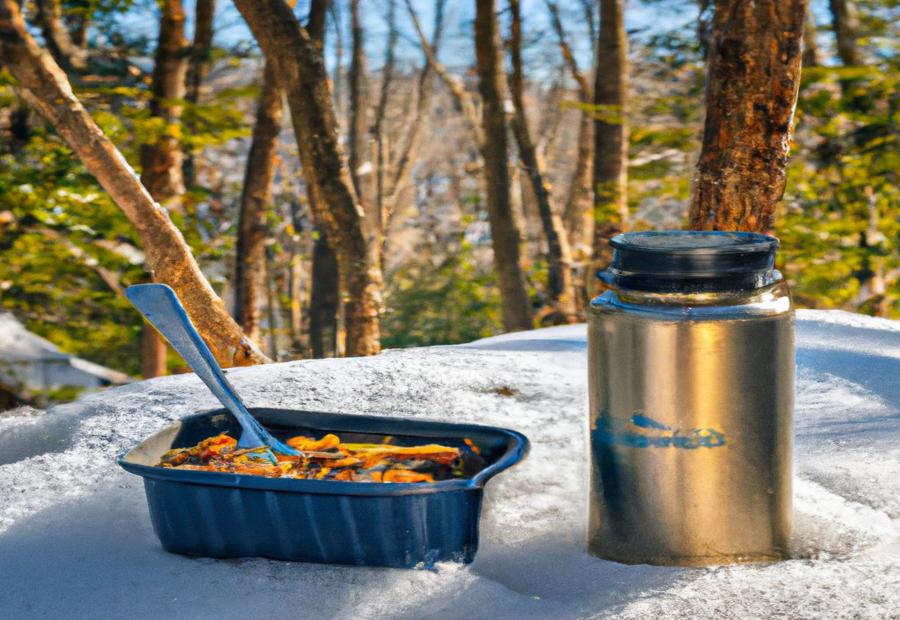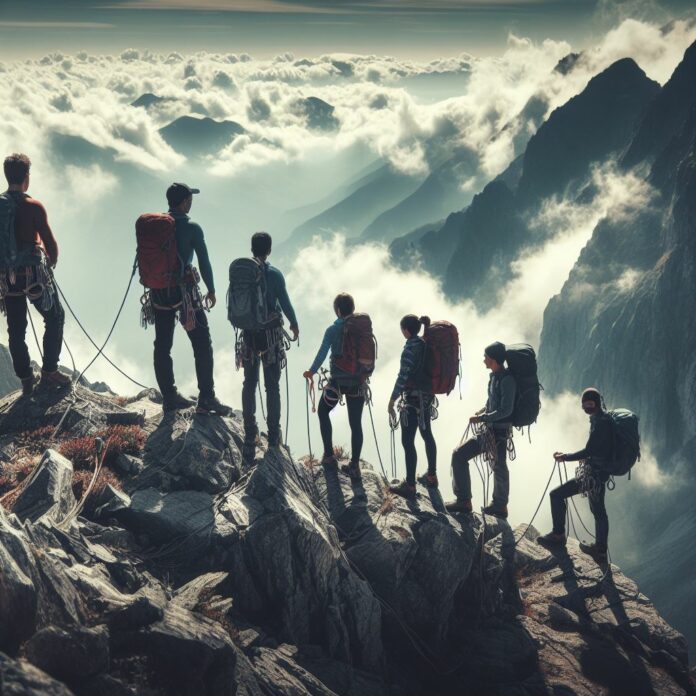Embarking on a high-altitude outdoor adventure can be an exhilarating and rewarding experience, but it also requires proper preparation. Before you set off on your journey, it’s essential to understand what qualifies as a high-altitude outdoor adventure and why preparation is crucial.
A study published in Wilderness & Environmental Medicine by Thomas Harger highlights the challenges of high-altitude environments and the importance of appropriate planning.
Qualifying as a high-altitude outdoor adventure often means venturing into altitudes above 8,000 feet (2,400 meters). These regions present unique environmental conditions, including lower oxygen levels, extreme temperatures, and difficult terrain.
Preparation is essential to ensure your safety, health, and enjoyment throughout the adventure.
Preparing physically is crucial for a high-altitude outdoor adventure. Building cardiovascular fitness is essential to cope with the reduced oxygen levels at higher altitudes. Strengthening leg muscles will help you navigate steep inclines and difficult terrain effectively.
Improving endurance is necessary to sustain physical exertion at altitude. Acclimatization techniques aid in gradually adapting your body to the environment, reducing the risk of altitude sickness.
Natural acclimatization occurs as your body adjusts over time, while artificial acclimatization methods, such as medication or specialized equipment, can speed up the process.
Preparing mentally is equally important. Altitude sickness is a common concern, and understanding and managing its symptoms is crucial. Developing mental resilience will help you cope with the physical and psychological challenges at high-altitude.
Training specifically for high-altitude challenges, such as exposure to thin air, extreme temperatures, and navigating difficult terrain, will help you face these obstacles with confidence and preparedness.
In addition to physical and mental preparation, having the right gear and equipment is essential. Clothing and layering techniques ensure proper insulation and protection from the elements. Suitable footwear is crucial for stability and comfort on rugged terrain.
Headwear and eyewear provide protection from the sun’s glare and cold temperatures. Sleeping gear adapted to the outdoor conditions ensures restful nights. Navigation tools, such as maps, compasses, or GPS devices, are indispensable for route planning and safety.
Lastly, nutrition and hydration play vital roles in high-altitude outdoor adventures. Understanding your calorie requirements and consuming nutrient-dense meals is essential to sustain energy levels.
Adequate hydration helps prevent altitude-related health issues. Special considerations, such as adjusting your diet to include foods rich in iron and antioxidants, can further support your body’s adaptation to high-altitude environments.
By comprehensively preparing for a high-altitude outdoor adventure, you can minimize risks, enhance enjoyment, and make the most of your experience in these breathtaking landscapes.
Understanding High-Altitude Outdoor Adventures

Understanding high-altitude outdoor adventures can be essential for a safe and enjoyable experience. These adventures typically take place at elevations above 8,000 feet, where oxygen levels are lower and the environment is more challenging.
It is important to be aware of the potential risks and take necessary precautions.
- Acclimatization: One crucial aspect of understanding high-altitude outdoor adventures is allowing your body time to adjust to the high altitude. Gradually ascending to higher elevations and taking rest days can help prevent altitude sickness.
- Hydration: Understanding the importance of staying properly hydrated is crucial at high altitudes. Drinking plenty of water helps combat the effects of dehydration, which can be exacerbated by dry climates and increased physical exertion.
- Proper gear: Having the right equipment is essential for understanding high-altitude outdoor adventures. It is important to have appropriate clothing, including layers for changing weather conditions, as well as sturdy footwear.
- Knowledge of symptoms: Understanding the symptoms of altitude sickness, such as headache, nausea, and dizziness, is important. Being aware of these signs and seeking medical help, if necessary, can prevent further complications.
By understanding these factors, adventurers can better prepare themselves for the challenges of high-altitude outdoor activities. Remember to prioritize safety and always seek expert advice when necessary.
This way, you can fully enjoy the incredible experiences that high-altitude adventures have to offer.
What Qualifies as a High-Altitude Outdoor Adventure?
A high-altitude outdoor adventure refers to any outdoor activity or expedition that takes place at a significantly elevated altitude above sea level. Typically, an adventure is considered high-altitude when it takes place above 8,000 feet (2,400 meters).
These adventures often involve challenging terrains, extreme weather conditions, and limited oxygen levels.
Rock climbing expeditions on mountains like Mount Whitney or Mount Rainier, mountaineering treks in the Himalayas or Andes, and high-altitude hikes such as the Auzangate Loop are all examples of high-altitude outdoor adventures.
Activities like mountain biking, zip-lining, and outdoor tours in areas with high elevations can also qualify.
Engaging in a high-altitude outdoor adventure requires careful preparation and consideration of multiple factors. It is crucial to be physically fit, mentally prepared, and have appropriate gear and equipment to ensure a safe and successful experience.
Additionally, awareness of high-altitude ailments such as acute mountain sickness and high-altitude cerebral edema is essential.
If you are someone who seeks the thrill and challenge of exploring desolate places, pushing your physical and mental limits, and experiencing stunning views from high altitudes, then a high-altitude outdoor adventure might be the perfect choice for you.
Remember to always prioritize safety, follow proper acclimatization techniques, and seek the guidance of experienced professionals or tour guides when embarking on these extreme adventures.
Why is Preparation Important for High-Altitude Outdoor Adventures?
Preparation is of utmost importance for high-altitude outdoor adventures in order to ensure safety and enhance the overall experience. Active planning and preparation play a vital role in mitigating the potential risks and challenges that come with high-altitude environments.
By being well-prepared, individuals can minimize the negative effects that altitude sickness can have on their bodies.
Without proper preparation, individuals may encounter symptoms such as shortness of breath, dizziness, and fatigue, which can greatly impact their ability to enjoy their adventure.
Research has demonstrated that being physically fit and adequately trained prior to embarking on a high-altitude outdoor adventure can bolster endurance and reduce the risk of altitude sickness.
Developing cardiovascular fitness, strengthening leg muscles, and improving endurance are all crucial aspects of physical preparation.
Additionally, mental resilience is equally important. Training for high-altitude challenges and exposure to thin air, extreme temperatures, and navigating difficult terrains can enhance mental resilience and ensure a successful and enjoyable adventure.
Moreover, having the appropriate gear and equipment is essential for comfort and safety. This encompasses clothing and layering techniques to safeguard against the elements, suitable footwear for various terrains, headwear and eyewear for sun protection, and navigation tools to guarantee a safe journey.
Last but not least, proper nutrition and hydration are indispensable for high-altitude adventures. Understanding calorie requirements and considering special considerations for high-altitude nutrition can help maintain energy levels and prevent dehydration.
Preparing Physically for a High-Altitude Outdoor Adventure

Getting ready for a high-altitude outdoor adventure? This section will give you the inside scoop on preparing yourself physically. From building cardiovascular fitness to strengthening leg muscles and improving endurance, we’ll cover it all.
And don’t forget about acclimatization techniques—essential for ensuring a smooth transition as you ascend to higher altitudes. So let’s lace up those hiking boots and get ready to conquer the great heights that await!
Building Cardiovascular Fitness
When preparing for a high-altitude outdoor adventure, it is important to focus on building cardiovascular fitness. Here are some essential steps to consider:
- Make aerobic exercises such as running, cycling, and swimming a part of your regular workout routine. These activities are effective in increasing your heart rate and improving your cardiovascular endurance, contributing to the development of your fitness.
- Incorporate interval training into your regimen, which involves alternating between high-intensity bursts of activity and periods of recovery. This method can have a positive impact on your overall cardiovascular stamina.
- Include hill or stair workouts in your training plan. Climbing stairs or running uphill can replicate the challenges of high-altitude terrain, helping you strengthen your leg muscles and enhance your endurance.
- Engage in activities that simulate the demands of your specific outdoor adventure. For instance, if you are planning a mountain climbing trip, practice hiking while carrying a weighted backpack to replicate the conditions you will face.
- Gradually increase the intensity and duration of your workouts over time in order to progressively challenge your cardiovascular system and prepare it for the demands of high-altitude activities.
Remember to pay attention to your body and consult with a healthcare professional before embarking on any new exercise program. Building cardiovascular fitness requires time and consistency, so it is crucial to start early and stay committed to your training plan.
By prioritizing your physical preparation, you will enhance your performance and increase your enjoyment during your high-altitude adventure.
Strengthening Leg Muscles
To enhance and strengthen your leg muscles for a high-altitude outdoor adventure, you can incorporate the following steps:
- Include squats in your workout routine. Squats are an excellent exercise for targeting your quadriceps, hamstrings, and glutes, promoting overall leg strength. Start with 3 sets of 10-12 squats, gradually increasing the weight or difficulty as you progress.
- Add lunges to your leg workout. Lunges effectively work your quadriceps, hamstrings, glutes, and calf muscles. Perform 3 sets of 10-12 lunges on each leg, ensuring proper form and posture.
- Incorporate step-ups into your routine. Step-ups specifically target your quadriceps, hamstrings, glutes, while simultaneously improving balance and stability. Begin by stepping onto a platform or step with one foot, then bring your other foot up and step back down. Aim for 3 sets of 10-12 step-ups on each leg.
- Include calf raises in your leg workout. Calf raises are crucial for strengthening your calf muscles, essential for activities like hiking and climbing. Stand on the edge of a step or platform with your heels hanging off, then raise your heels as high as possible and lower them back down. Complete 3 sets of 10-12 calf raises.
Pro-tip: To further intensify your leg strengthening exercises, you may want to consider incorporating resistance bands or weights. Additionally, don’t forget to warm up and stretch before and after your workouts to prevent any potential injuries.
Improving Endurance
To enhance endurance for a high-altitude outdoor adventure, it is crucial to incorporate specific strategies and techniques:
- Gradual training: In order to improve endurance over time, it is important to gradually increase the duration and intensity of physical activities. Begin with shorter hikes or workouts and progressively lengthen the time and difficulty.
- Aerobic exercises: Engage in aerobic exercises such as running, hiking, or cycling to enhance cardiovascular fitness and endurance. These activities raise your heart rate and improve the oxygenation of your muscles.
- Interval training: To boost both aerobic and anaerobic endurance, incorporate interval training into your workouts. Alternate between high-intensity bursts of activity and periods of rest or lower intensity to challenge your body and improve endurance.
- Strength training: Include strength training exercises to develop muscular endurance. Focus on exercises that target major muscle groups, such as squats, lunges, and push-ups.
- Proper nutrition: Maintain a well-balanced diet to provide your body with the necessary fuel and nutrients to support endurance activities. Consume a combination of carbohydrates, proteins, and healthy fats to sustain energy levels.
- Hydration: Ensure proper hydration to optimize endurance. Drink water regularly throughout the day and during outdoor activities to prevent dehydration and enhance performance.
- Rest and recovery: Allow your body sufficient time to rest and recover between workouts. This will help prevent overtraining and maximize endurance gains.
- Consistency: Consistency is essential for improving endurance. Engage in physical activities regularly and adhere to your training plan to gradually enhance your endurance levels.
Acclimatization Techniques
The acclimatization techniques, both natural and artificial, are crucial to prepare for a high-altitude outdoor adventure.
- Natural acclimatization: Gradually increasing the altitude allows the body to naturally acclimatize over time. Starting at lower altitudes and ascending slowly over several days is recommended. Giving the body enough time to adjust to the reduced oxygen levels is essential for a successful high-altitude adventure.
- Artificial acclimatization: In some cases, artificial means can be used to aid in acclimatization. Altitude simulation devices, like hypobaric chambers or specialized tents, can simulate high-altitude conditions. These devices expose the body to reduced oxygen levels, enabling quicker adaptation. Medications such as acetazolamide can also be used to prevent altitude sickness and assist in acclimatization.
By incorporating these acclimatization techniques, individuals can better prepare their bodies for the challenges of high-altitude outdoor adventures. This reduces the risk of altitude-related illnesses and ensures a more enjoyable experience.
Preparing Mentally for a High-Altitude Outdoor Adventure

When it comes to preparing for a high-altitude outdoor adventure, one crucial aspect often overlooked is the mental preparation. In this section, we’ll discover the importance of developing mental resilience, which will enable you to tackle the challenges that high-altitude brings.
Additionally, we’ll explore effective training techniques tailored specifically for the demands of high-altitude excursions. So, get ready to equip yourself with the mental strength needed for an unforgettable high-altitude adventure!
Developing Mental Resilience
Developing mental resilience is crucial for a high-altitude outdoor adventure.
Active climbers and hikers must cultivate a strong mindset to overcome challenges and ensure their safety in extreme conditions.
Being mentally prepared helps individuals face altitude sickness, extreme temperatures, and navigate difficult terrain effectively.
Studies show that mental resilience plays a significant role in the success of high-altitude adventures.
A Princeton University study found that individuals with higher levels of mental resilience experienced less acute mountain sickness and had a more enjoyable and fulfilling experience.
To develop mental resilience, adventurers can engage in activities to strengthen their mindset, such as exposure to thin air, endurance training in extreme temperatures, and practicing navigation in challenging terrains.
Developing mental resilience allows adventurers to remain calm, focused, and make sound decisions while facing the unpredictable nature of high-altitude environments.
Developing Mental Resilience is key in the preparation of a high-altitude outdoor adventure.
Being mentally prepared enables climbers and hikers to conquer challenges and ensure their safety in extreme conditions.
By developing mental strength, adventurers can effectively face altitude sickness, extreme temperatures, and easily navigate difficult terrain.
Research indicates the substantial impact of mental resilience on the success of high-altitude adventures.
A study conducted by Princeton University revealed that individuals with higher levels of mental resilience experienced reduced symptoms of acute mountain sickness and had a more enjoyable and rewarding experience.
In order to cultivate mental resilience, adventurers can engage in activities aimed at strengthening their mindset, such as exposing themselves to thin air, training in extreme temperatures, and practicing navigation in challenging terrains.
Developing mental resilience allows adventurers to maintain a sense of calm, focus, and make informed decisions while facing the unpredictable nature of high-altitude environments.
Training for High-Altitude Challenges
Training for high-altitude challenges involves specific steps to prepare your body and mind for the unique conditions and demands of high-altitude outdoor adventures:
- Build cardiovascular fitness: Engage in regular aerobic exercises such as running, cycling, or swimming to improve your heart and lung capacity to better cope with decreased oxygen levels at high altitudes.
- Strengthen leg muscles: Incorporate exercises like squats, lunges, and step-ups to build strength in your leg muscles, which will help you navigate difficult terrain and maintain stability during hikes or climbs.
- Improve endurance: Gradually increase the duration and intensity of your workouts to build endurance. This can involve longer hikes or climbing sessions, allowing your body to adapt to prolonged physical activity at high altitudes.
- Use acclimatization techniques: Practice natural acclimatization by gradually ascending to higher altitudes, giving your body time to adjust to the changes in oxygen levels. Artificial acclimatization methods like using altitude training masks or hypoxic tents can also be considered.
- Expose yourself to thin air: Spend time in environments with reduced oxygen levels, such as higher altitude locations or simulated low-oxygen environments, to challenge your body and adapt to the conditions.
- Endure extreme temperatures: Train in various weather conditions to acclimate your body to extreme temperatures, which can fluctuate drastically at high altitudes.
- Navigate difficult terrain: Take part in training hikes or climbs that simulate the challenging terrain you may encounter during your high-altitude adventure. This will help develop your balance, coordination, and skill in traversing rugged landscapes.
By following these steps, you can enhance your physical and mental readiness for high-altitude challenges, increasing your chances of a successful and enjoyable outdoor adventure.
Essential Gear and Equipment

When it comes to embarking on a high-altitude outdoor adventure, having the right gear and equipment can make all the difference. In this section, we will dive into the essentials that you need to pack for a successful journey.
From clothing and layering to footwear, headwear, eyewear, sleeping gear, and navigation tools, we’ve got you covered. So gear up and get ready for an unforgettable expedition into the great outdoors!
Clothing and Layering
When preparing for a high-altitude outdoor adventure, clothing and layering are crucial. Here are some essential aspects to consider:
- Choose clothing items that provide insulation to keep you warm in the cold and high altitudes. Look for jackets, fleeces, and base layers made of materials such as wool or synthetic fibers.
- Layering is important for temperature regulation. Wear multiple layers that can be easily added or removed according to the changing conditions. Start with a moisture-wicking base layer, add an insulating mid-layer, and finish with a waterproof and windproof outer layer.
- When venturing into high altitudes, it is essential to have waterproof clothing to protect yourself from rain, snow, or wet conditions. Invest in a waterproof jacket, pants, and gloves to keep dry.
- High altitudes expose you to increased levels of UV radiation. Protect your skin and eyes by wearing sunscreen and UV-blocking sunglasses or goggles.
- Choose sturdy and comfortable hiking boots or shoes that provide ankle support and have a good grip for navigating difficult terrains.
Remember, clothing and layering will ensure your comfort, protection, and enjoyment during your high-altitude outdoor adventure.
Footwear
- When embarking on a high-altitude outdoor adventure, it is essential to choose footwear that is sturdy and supportive.
- To prevent sprains and injuries on uneven terrain, opt for hiking boots or trail shoes that provide ankle support.
- Make sure your footwear has a good grip to offer traction on rocky or slippery surfaces.
- For rainy conditions or when crossing streams, select waterproof or water-resistant footwear to keep your feet dry.
- Consider the climate and season of your adventure when choosing insulated or warm-weather footwear.
- Avoid sweaty and uncomfortable feet during long hikes by wearing breathable shoes.
- Bring extra pairs of socks to keep your feet dry and reduce the chance of getting blisters.
- Ensure that the fit of your footwear is comfortable, preventing rubbing or discomfort.
- Prior to your adventure, test your footwear to break them in and avoid painful blisters or hotspots.
- Gaiters can provide protection for your ankles and lower legs from debris, mud, or snow.
- Remember to properly maintain your footwear by cleaning, drying, and storing them after each use.
Choosing the appropriate footwear for your high-altitude outdoor adventure is vital for comfort, protection, and optimal performance. By following these guidelines, you can make informed decisions and select the perfect footwear for your upcoming adventure.
Headwear and Eyewear
When embarking on a high-altitude outdoor adventure, it is crucial to choose the right headwear and eyewear for optimal protection and comfort.
- Headwear: A wide-brimmed hat or a baseball cap with a neck flap helps shield your face, neck, and ears from the intense sun at high altitudes. Additionally, a hat can provide some insulation against cold temperatures and wind. Choose a hat that is lightweight, breathable, and has UPF (Ultraviolet Protection Factor) to protect against harmful UV rays.
- Eyewear: Sunglasses with UV protection are essential to protect your eyes from the sun’s glare and harmful UV rays at higher elevations. Look for sunglasses with a high level of UV protection, preferably 100%. Polarized lenses can also reduce glare, enabling better visibility in bright conditions. Choose sunglasses that are durable and fit snugly to prevent them from slipping off during outdoor activities.
Remember, wearing the appropriate headwear and eyewear can enhance your outdoor experience by protecting your face, eyes, and head from the elements, whether it’s intense sunlight or chilly winds.
Sleeping Gear
When it comes to preparing for a high-altitude outdoor adventure, having the right sleeping gear is crucial for a comfortable and safe experience. Here are some essential items for your sleeping gear:
- A high-quality sleeping bag designed for cold weather conditions. Look for one that provides sufficient insulation and is rated for the temperatures you expect to encounter.
- A sleeping pad to provide cushioning and insulation from the cold ground. Opt for one that is lightweight, compact, and provides good insulation.
- A sleeping bag liner can add an extra layer of warmth and comfort to your sleeping bag.
- A pillow or inflatable camping pillow to support your head and neck while you sleep.
- Campsite setup essentials, such as a tent, stakes, and a groundsheet, to protect you from the elements and ensure a dry and comfortable sleeping area.
- Extra blankets or layers to provide additional warmth if needed.
To enhance your sleeping gear, consider the following suggestions:
- Invest in down sleeping bags for superior warmth-to-weight ratio and packability.
- Choose a lightweight and compact inflatable sleeping pad for better comfort and insulation.
- Use a compression sack to reduce the size of your sleeping bag and make it easier to pack.
- Consider sleeping in base layers to provide additional warmth and moisture-wicking properties.
- Learn proper sleeping bag care to maintain its insulation and longevity.
By having the right sleeping gear and following these suggestions, you can rest well and feel refreshed for the exciting adventures that await you at high-altitude.
Navigation Tools
When embarking on a high-altitude outdoor adventure, it is imperative to possess the appropriate navigation tools to ensure both safety and success. Here are some vital navigation tools to consider:
- Compass: Utilizing a compass is essential in determining direction and maintaining a sense of orientation within unfamiliar terrain. This tool aids in navigating through mountains, forests, and other challenging landscapes.
- Topographic Maps: Topographic maps furnish detailed information regarding land features, including elevation, contours, and natural landmarks. These maps are crucial for route planning and comprehending the terrain that lies ahead.
- GPS Device: A GPS device accurately pinpoints your location through satellite signals. It also tracks your route, assisting you in staying on course and finding your way back if necessary. Remember to bring spare batteries or a portable charger.
- Altimeter: An altimeter measures altitude by detecting atmospheric pressure changes. This tool helps monitor elevation gain and changes in altitude, which is vital for acclimatization and preventing altitude sickness.
- Trail Markers: Be on the lookout for trail markers along your route, such as signs, cairns, or blazes on trees. These markers ensure you remain on the designated path and avoid any chances of getting lost.
- Navigation Apps: Some navigation apps, such as offline maps or GPS apps, prove useful for accessing digital maps and tracking your progress on your smartphone or tablet. However, keep in mind that cell service may be limited in remote or high-altitude areas, so it is prudent to have a backup plan.
By utilizing these navigation tools, you can confidently and safely navigate during your high-altitude outdoor adventure.
Nutrition and Hydration

When embarking on a high-altitude outdoor adventure, nutrition and hydration play a crucial role in your performance and well-being. From understanding your calorie requirements to knowing the right hydration considerations, we’ll explore how to fuel your body optimally for the challenges ahead.
Additionally, we’ll uncover special considerations unique to high-altitude nutrition to help you make the most of your outdoor experience. So grab your water bottle and join us on this adventure into the realm of nutrition and hydration!
Hydration Considerations
When preparing for a high-altitude outdoor adventure, it is crucial to prioritize hydration. Hydration considerations should be kept in mind. Here are some key factors to consider:
- Water intake: It is important to hydrate regularly throughout the day. Aim for a minimum of 2-3 liters of water each day to compensate for increased respiratory and urine water loss at high altitudes.
- Electrolyte balance: Along with water, replenishing electrolytes is essential. Sodium, potassium, and magnesium are lost through sweat and urine. To maintain balance, consume foods and drinks rich in electrolytes, such as fruits, vegetables, and sports drinks.
- Avoid caffeine and alcohol: To prevent dehydration, it is best to limit the consumption of caffeine and alcohol at high altitudes.
- Symptoms of dehydration: Be aware of dehydration symptoms, including dry mouth, fatigue, headache, dizziness, and reduced urine output. If any of these symptoms arise, take immediate action.
- Appropriate water sources: Ensure that the water you consume is from safe and reliable sources. In high-altitude environments, melting snow or ice with proper filtration or using packaged water ensures safe drinking water.
By considering these hydration considerations, you can maintain optimal hydration levels and minimize the risk of dehydration while enjoying your high-altitude adventure.
Special Considerations for High-Altitude Nutrition
The special considerations for high-altitude nutrition, also known as special considerations for high-altitude nutrition, include:
- Adequate hydration: It is crucial to stay hydrated at high altitudes to prevent dehydration. Drink enough water or electrolyte-rich fluids throughout the day to replace the moisture lost through sweating and respiration.
- Increase calorie intake: Your body requires more energy at high altitudes due to the increased metabolic demands. Consume extra calories to maintain energy levels and support physical activity. Aim for a calorie increase of 10-20%.
- Focus on carbohydrates: Carbohydrates are the primary source of fuel for your muscles. Include complex carbohydrates such as whole grains, fruits, and vegetables in your meals to provide sustained energy.
- Boost iron intake: High-altitude environments can affect your body’s ability to transport oxygen. Iron is essential for the production of red blood cells, which carry oxygen. Include iron-rich foods like lean meats, beans, fortified cereals, and leafy greens in your diet.
- Ensure adequate protein intake: Protein helps in muscle repair and recovery. Consume lean sources of protein like poultry, fish, tofu, beans, and nuts to support muscle health and overall performance.
- Consume antioxidants: High altitude can increase oxidative stress on the body. Include foods rich in antioxidants, such as berries, dark chocolate, and green leafy vegetables, to reduce oxidative damage and support overall health.
- Limit alcohol intake: Alcohol can exacerbate the symptoms of altitude sickness and dehydration. Avoid or minimize alcohol consumption to mitigate these risks and ensure optimal hydration.
- Listen to your body: Pay attention to any dietary preferences or sensitivities you may have. It is essential to consume foods that you enjoy and can tolerate well at high altitudes to maintain adequate nutrition and prevent gastrointestinal discomfort.
By following these special considerations for high-altitude nutrition, you can optimize your performance and well-being during high-altitude outdoor adventures.
Frequently Asked Questions
1. How can I prepare for a high-altitude outdoor adventure?
Preparing for a high-altitude outdoor adventure involves training and acclimatizing your body to the thin mountain air. Start by gradually increasing your elevation during training hikes and incorporating activities like running, biking, and strength training.
Consider using an altitude chamber or renting a home altitude chamber to simulate high-altitude conditions. It’s also important to stay hydrated, bring medications for altitude sickness, and pack the right gear.
2. What are the risks associated with high-altitude hiking?
High-altitude hiking poses risks such as Acute Mountain Sickness (AMS), High Altitude Pulmonary Edema (HAPE), and High Altitude Cerebral Edema (HACE).
AMS can cause symptoms similar to a hangover, while HAPE and HACE are more severe and require immediate descent. It’s crucial to be aware of these risks and take necessary precautions to prevent or address them during your adventure.
3. What kind of gear should I bring for a high-altitude hike?
When packing for a high-altitude hike, consider the changing weather conditions and bring appropriate clothing.
Some essential items to pack include merino-wool or synthetic base layers, hiking pants or leggings, lightweight rain pants and a rain jacket with Gore-Tex, liner gloves, a warm beanie, sunglasses that block 100% of UV rays, a Buff, and a lightweight down jacket.
Additionally, ensure you have well-broken-in hiking boots or trail runners, wool socks, and waterproof gaiters. Don’t forget other essential gear like a backpack, trekking poles, a headlamp, a hydration reservoir, and a map and compass.
4. How should I train for a high-altitude outdoor adventure?
To train for a high-altitude outdoor adventure, incorporate activities that help improve your overall fitness, endurance, and strength. This can include running stairs and hills, training hikes with a weighted pack, and gym workouts.
It’s also beneficial to acclimate to higher elevations before the actual adventure. Remember to consult with a doctor before starting any training regimen to ensure you are in good health.
5. What should I do if I experience symptoms of altitude sickness during a high-altitude hike?
If you experience symptoms of altitude sickness, such as headaches, nausea, or shortness of breath, it’s important to acclimate properly and descend to lower altitudes. Take it slow and listen to your body.
If symptoms worsen or you experience more severe symptoms like confusion or difficulty in breathing, seek immediate medical assistance. It’s always better to prioritize your safety and well-being during high-altitude hikes.
6. How can I make the most of my high-altitude outdoor adventure?
To make the most of your high-altitude outdoor adventure, take time to enjoy the journey and explore the local area. High-altitude hikes offer unique and awe-inspiring experiences that should be cherished.
Document your adventures with a digital camera and create lasting memories. Remember to respect the environment by practicing Leave No Trace ethics and ensure you have a thrilling and enjoyable experience by considering guided tours or vacation packages offered by reputable outfitters.

